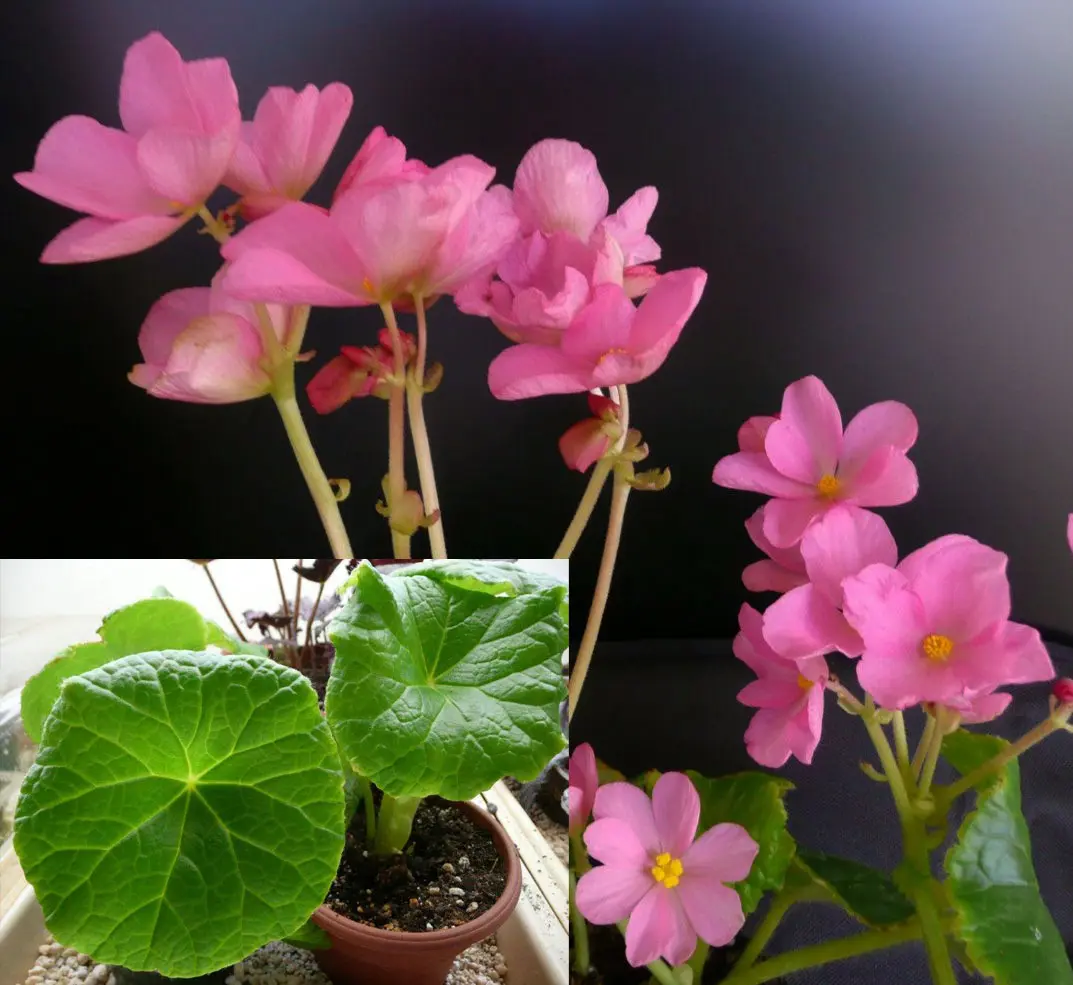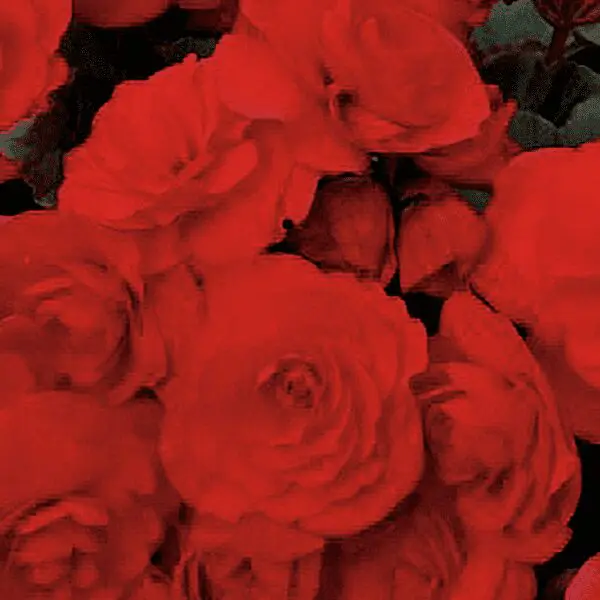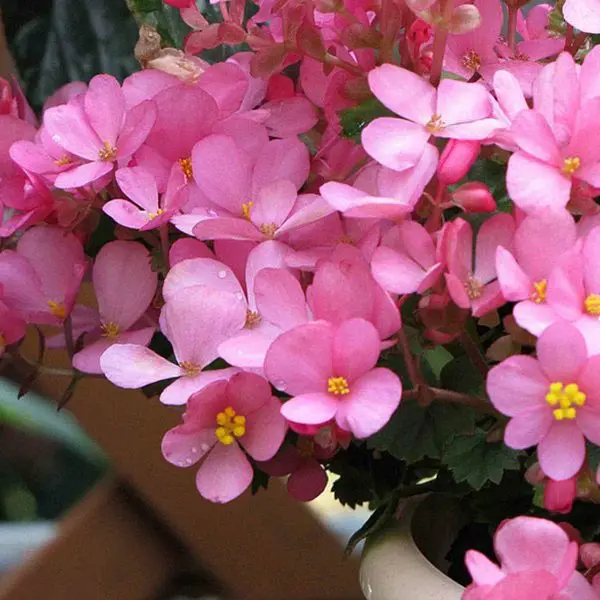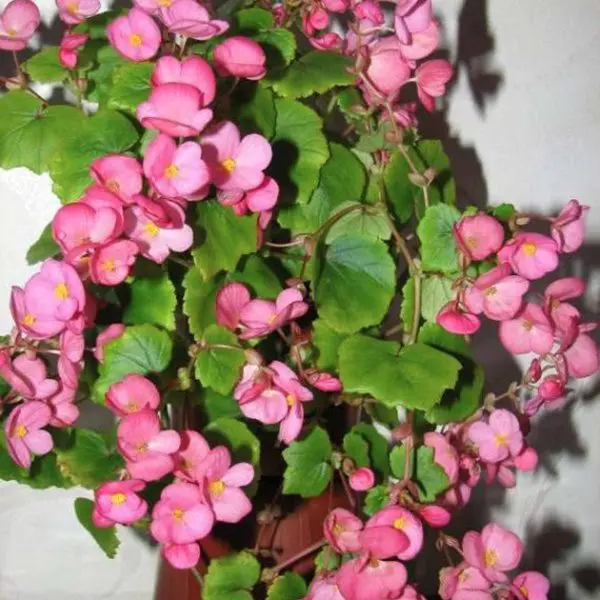Here again, is a group of Begonia with no clear parent species; instead we have a conglomeration of species and cultivars all mixed together. These are complex hybrids of tuberous begonias and Begonia socotrana from the Island of Socotra (with a dash of B. dregei, B. ×semperflorens, and B. grandis subsp. evansiana).
A lot of this can be blamed on B. socotrana as it was the first winter flowering Begonia, and as such shocked the early Begonia world. Early hybridists crossed B. socotrana with their current B. ×tuberhybrida cultivars and created a new class which began appearing in the late 1880’s and were winter blooming, notoriously difficult to grow, but amazing in that they flowered almost all year in rich colors. By flowering in winter, they created an entirely separate market for these plants in the homes of the aristocracy.
The addition of B. socotrana led to two main types of Begonias.
1. ×hiemalis type = when B. socotrana was crossed with B. ×tuberhybrida the seedlings gave semi-double to double flowers. Sometimes plants formed a tuber – sometimes not. This group was misnamed the Elatior and Rieger begonias later in history.
2. ×cheimantha = when B. socotrana was crossed with B. dregei it gave seedlings with single flowers in pink or white, and plants did not form a tuber.
About All Those Names
- 1881: Breeding began around 1881. The first plants were finicky and rare, and given the name ×hiemalis, which in Latin meant winter flowering. These cultivars were B. socotrana crossed with B. ×tuberhybrida, so they looked a bit like the tuberous Begonia. The first was B. ‘John Heal’ but soon others followed.
- 1891: The French breeding genius Victor Lemoine in Nancy, France developed B. ‘Gloire de Lorraine’ by reportedly crossing B. socotrana with B. dregei. These plants were categorized as ×cheimantha, which in Latin also meant winter flowering. It is likely that someone was trying to keep the two groups separate for marketing them. Lemoine created the Begonia ‘Gloire de Lorraine’ which was the most popular Begonia in Europe for over 10 years. Many years later the Begonia ‘Love Me’ is the recreation of the classic B. ‘Gloire de Lorraine’ so you can see what a beautiful plant it was (above).
- 1906: Then a new variety called B. ‘Elatior’ was released, it had better growth and fewer problems. It captivated the aristos, and likely carried an easier name to remember than the previous plants. Common use, over time, allowed the name to become attached to the group.
- 1950: The most significant early improvements came from Otto Rieger, in Germany, his improvements on ×hiemalis growth and disease resistance were so great, that for a while his breeding dominated the market and his name still follows these plants. His family nursery is still in business and still growing begonias.
However neither Elatior or Reiger were the correct name for this plant, they were just marketing names that got added along the way.
An example of Koppe’s lifestyle oriented promotions of their ×hiemalis breeding. | Photo: ©2021 Koppe Begonias.
- 2020: In these days Koppe Begonia in The Netherlands, Koppe Begonia rules in this category. Plants are easier and becoming more available in the flowering houseplant market, not for the garden. A world leader in ×hiemalis Begonia focused hybridizing, Koppe has also been exploring breeding which incorporates more of the ×tuberhybrida genetics, and with that expanding into more outdoor and landscape use hybrids.
Due to Europe’s more accepting market for indoor flowering plants, the ×hiemalis types are more popular in Europe than in the United States, but this is changing. With all of this breeding going on, the plants in this group are still best grown as indoor plants. They can usually be found with other flowering houseplants in the garden center, and are becoming more common in fall and winter.
They are also called Christmas Begonias, Yule Begonias, and Blooming Fool Begonias.










